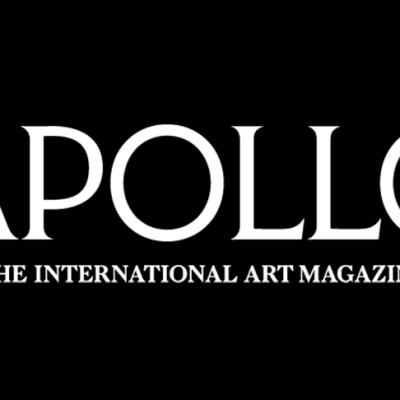The first work displayed in Mel Bochner’s exhibition ‘Strong Language’ at the Jewish Museum, New York, sets the scene for much of what follows. Self/Portrait (2013) comprises a series of synonyms for the terms ‘self’ and ‘portrait’. On the left hand side of the canvas is a column of 18 painted words that range from ‘self’ to ‘egohood’ to ‘being’; on the right hand side is a symmetrical column of words that range from ‘portrait’ to ‘caricature’ to ‘life study’.
The work is deceptive in its simplicity. Painted in white against a black background, the words can be read as two lists. But when the work is taken as a painting, the words are abstracted and become things to be looked at. As a self-portrait, moreover, the work offers a playful commentary on the insufficiencies of language. Something as seemingly simple to define as your own self slips away in an avalanche of words.
Most of the works brought together in ‘Strong Language’ follow a similar logic. Several of Bochner’s well known Thesaurus Paintings have been hung in two of the main rooms. Using the Roget thesaurus, Bochner paints lines of synonyms in different fonts. One of these large paintings begins with AMAZING! and ends, five lines later, in YES!. Another begins in SILENCE! and ends in SHUT THE FUCK UP!. Another still (in Yiddish, a homage to the Jewish Museum, where Bochner once worked as a security guard) begins in KIBBITZER and ends in SCHMO. In each work every letter is painted in upper case and in different colours, so that, especially from afar or from very close up, the works turn into dazzles of colour. And in each painting the viewer encounters the same movement described above: a movement from seeing to reading and back again.
Silence! (2011), Mel Bochner. Courtesy of the Hadley Martin Fisher Collection. Artwork © Mel Bochner

Taken together, these dozen or so paintings are strangely anxiety-provoking. Bochner’s word paintings foreground not only the conventional aspects of language but also its mechanical, inhuman aspects, when we usually take words to be transparent expressions of our interior emotions. And wherever you look in the exhibition words pile up, word by word and line by line, so that you sometimes feel as if you were caught inside somebody else’s head: the head of a compulsive perhaps, or of a neurotic. This effect is accentuated by the incongruous, kitschy palette often used in the works (as in the thesaurus painting that begins with the word DIE) or the dense impasto of some of the lettering, which only adds to the sense of claustrophobia, of being inundated by the materiality of language. In these works we are kept at the surface of things which are words which are things which are words. In a brilliantly curated show, Bochner reminds us that painting is not yet dead and that, in the artist’s own words, LANGUAGE IS NOT TRANSPARENT (1970).




